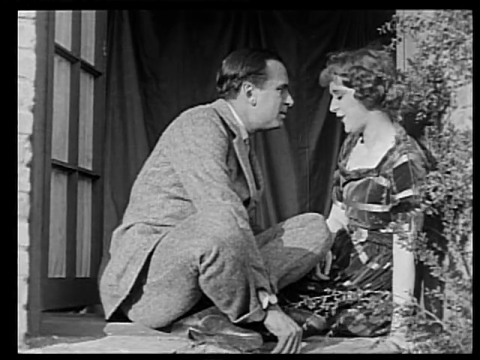When one talks about film comedies of the 1920s, there are mainly three big names to consider: Charlie Chaplin, Buster Keaton and Harold Lloyd. Had history taken a side step, however, a fourth name could have outshone them all: Douglas Fairbanks.
Fairbanks had already become the leading Hollywood comedian, and in fact the leading actor of any kind, in the late 1910s. Come the new decade, he was at a critical junction. His spectacular 1920 success The Mark of Zorro had been an experiment with a new kind of romantic adventure film, and needed to be followed up. During 1921, Fairbanks was to release two new films. The first was a traditional comedy, The Nut.
Fairbanks plays an inventor who is in love with a beautiful woman. He tries to impress her by holding parties in benefit of her charity mission for homeless children, but things go all wrong and he even lands himself in jail before he can try to set things right.
Had The Nut been more tightly written and directed, it would perhaps have been the success normally associated with the Fairbanks name. Had that been the case, who knows but that the ever business-minded Fairbanks might have decided to take up the race with the great comedians. But even though The Nut is both fun and inventive, it was no match for the competition. The same year, Chaplin released The Kid, Keaton was perfecting his genius with films such as The Boat, and Lloyd developed his thrill comedies with Never Weaken. Given such competition, The Nut is simply not good enough. Instead, it appears to have been Fairbanks’ last silent comedy, as he chose to pioneer the romantic adventure genre instead.
This film is best enjoyed for its playfulness, such as the use of a parrot with a word balloon (a very rare device, indeed, in silents), the crazy morning routine inventions, or the corny litter which carries itself. In addition, it is said that Charlie Chaplin makes a cameo appearance (Chaplin and Fairbanks had been among the co-founders of United Artists two years previously). I missed him, but if you catch him I would appreciate a comment about where he appears.
The Nut
Download link
Year: 1921
Running time: 1 h 15 min
Director: Theodore Reed
Stars: Douglas Fairbanks
Image quality: Acceptable
Resolution: Medium (640×480)
Soundtrack: None
Best file format: MPEG4 (604 M)







